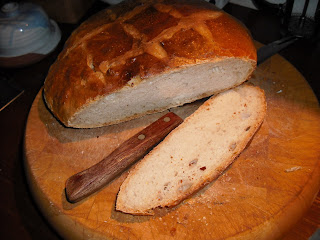- Atmospheric
- Welcoming
- Value
- Knowledgeable
- Efficient
The food on offer must be value for money. This goes without saying but it is incredible how so many restaurants get it so wrong on this front. In a Michelin starred restaurant you are paying for unbelievable attention to detail and also quality service. The food should also be mind-blowing. I always feel, if I have a meal that I would find virtually impossible to recreate at home; then to my mind, it is good value. Maybe this is a strange rule-of-thumb, however, there is nothing that annoys me more than a restaurant that serves up a badly-executed plate of food that is over-priced and tasteless. I also hate "menu speak". The menu that describes something as "resting on a bed of foam" type of thing.
The staff should be knowledgeable and familiar with the menu. There is nothing worse than a waiter/waitress who has to run off into the kitchen to ask a busy chef if a sauce has garlic in it, or some such. They should be able to describe the special of the day in particular and preferably have tasted it. Another bug bear of mine is staff who are not trained to serve wine correctly. It has happened in the past that I have ordered a bottle of wine which was then emptied into 3 or 4 glasses and filled to the brim, so much so, that I was tempted to get down to eye level and slurp it!!
My final quality is efficiency and attention to detail. And by efficiency I do not mean whipping the plate out from under me before I am finished. A waiter/waitress who knows when to clear a table, when to suggest looking at the dessert menu, who knows when to give you the bill. The amount of times I have been tempted to walk out without paying because the said waiter or waitress refused to give me the bill despite being requested to numerous times. Or even did not return with a receipt or change no matter how small the change was. This happened to us in France this summer in Narbonne where we sat outside on a footpath while the staff rushed backwards and forwards into the restaurant looking incredibly busy but actually doing nothing. The amount of tables left waiting to order, waiting for food or drinks, waiting to pay the bill and then finally as we were, left waiting for our change beggared belief. Eventually, when we got our change we got up fuming and did not leave a tip.
If this makes me the customer from hell then maybe I am. It never fails to amaze me that so many restaurants are let down by badly-trained staff despite the food being great and also how mediocre food is made a hundred times better by friendly, smiling, efficient staff. The importance of service can never be over-estimated.
Restaurant Reviews Restaurant Critics Narbonne Restaurant Customer Menu Speak


